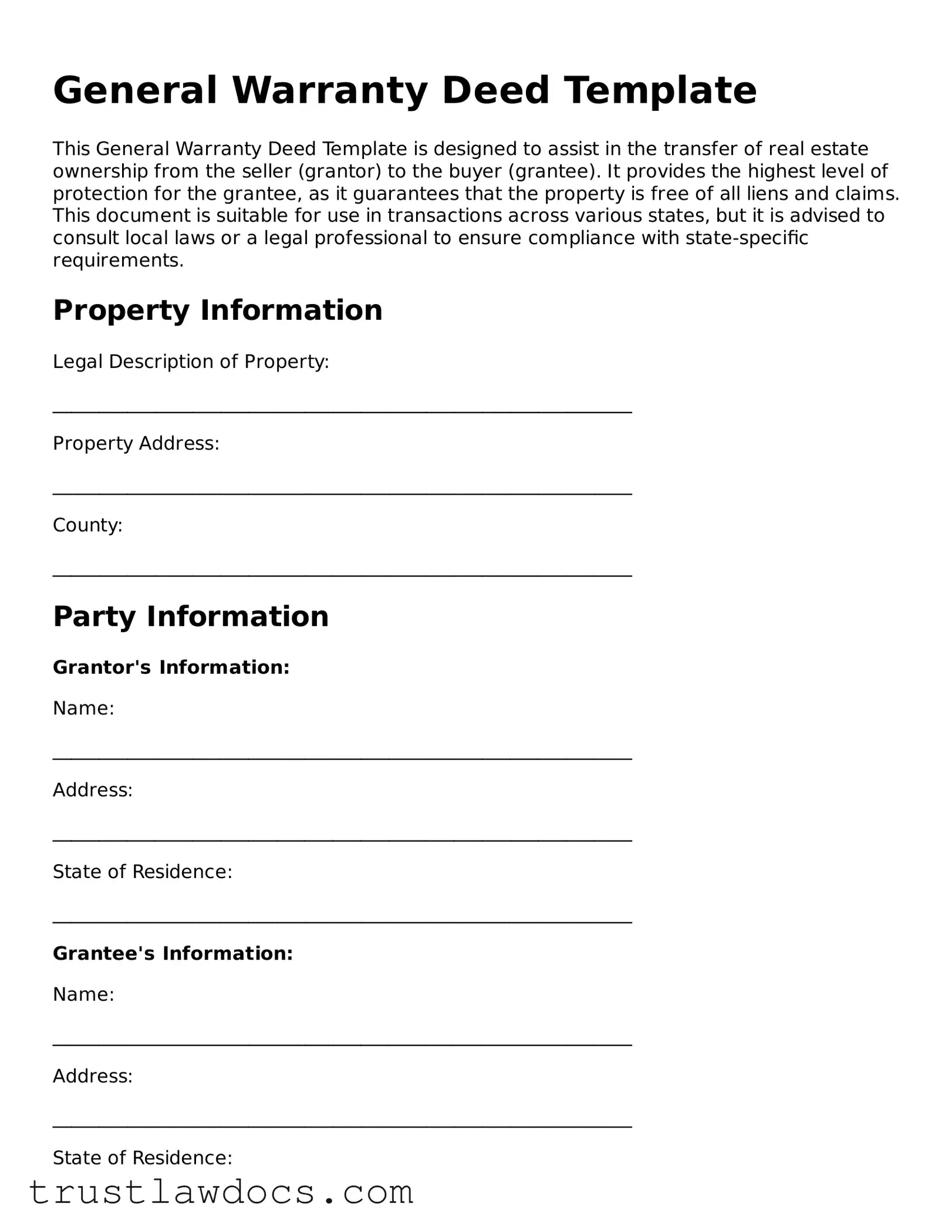General Warranty Deed Template
This General Warranty Deed Template is designed to assist in the transfer of real estate ownership from the seller (grantor) to the buyer (grantee). It provides the highest level of protection for the grantee, as it guarantees that the property is free of all liens and claims. This document is suitable for use in transactions across various states, but it is advised to consult local laws or a legal professional to ensure compliance with state-specific requirements.
Property Information
Legal Description of Property:
______________________________________________________________
Property Address:
______________________________________________________________
County:
______________________________________________________________
Party Information
Grantor's Information:
Name:
______________________________________________________________
Address:
______________________________________________________________
State of Residence:
______________________________________________________________
Grantee's Information:
Name:
______________________________________________________________
Address:
______________________________________________________________
State of Residence:
______________________________________________________________
Conveyance Terms
The Grantor(s) hereby conveys to the Grantee(s), their heirs, successors, and assigns, the described property, with all rights, privileges, and appurtenances, free and clear of all encumbrances, except as specifically noted herein. This conveyance is made with the Covenant of General Warranty. The Grantor(s) will defend the title to the property against the lawful claims and demands of all persons.
Date of Conveyance:
______________________________________________________________
In witness whereof, the Grantor(s) have set their hand(s) on this day:
______________________________________________________________
Signatures
Grantor's Signature:
______________________________________________________________
Date:
______________________________________________________________
Grantee's Signature:
______________________________________________________________
Date:
______________________________________________________________
Witnesses
(If required by state law)
Witness #1 Name:
______________________________________________________________
Witness #1 Signature:
______________________________________________________________
Date:
______________________________________________________________
Witness #2 Name:
______________________________________________________________
Witness #2 Signature:
______________________________________________________________
Date:
______________________________________________________________
Acknowledgment by Notary Public
State of _________________
County of _______________
On this __________ day of __________, 20____, before me, a Notary Public, personally appeared _______________________________________, known to me (or satisfactorily proven) to be the person(s) whose name(s) is/are subscribed to the within instrument and acknowledged that he/she/they executed the same for the purposes therein contained.
In witness whereof, I hereunto set my hand and official seal.
Notary Public Signature:
______________________________________________________________
Commission Expires:
______________________________________________________________
